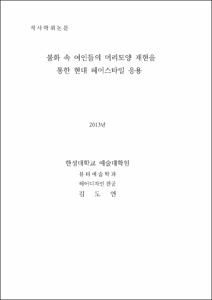불화 속 여인들의 머리모양 재현을 통한 현대 헤어스타일 응용
= Modern Hair Style Application Through Recreation of Women‘s Hair Style in Buddhist Paintings
- Files in This Item:
-
-
Download
 000001628587.pdf
기타 데이터 / 12.92 MB / Adobe PDF
000001628587.pdf
기타 데이터 / 12.92 MB / Adobe PDF
-
Items in Repository are protected by copyright, with all rights reserved, unless otherwise indicated.